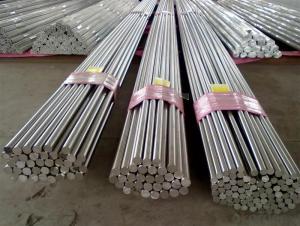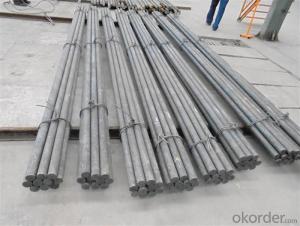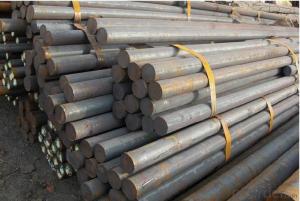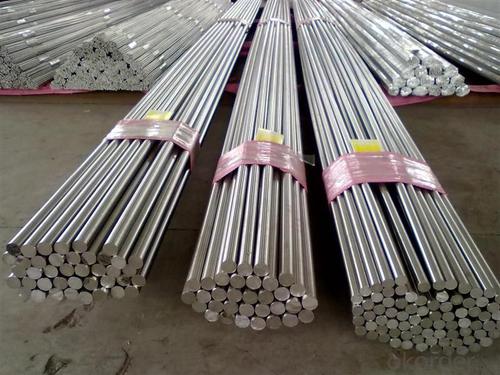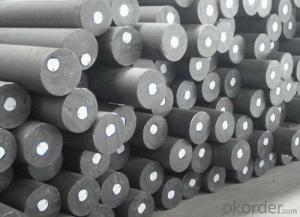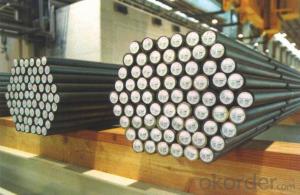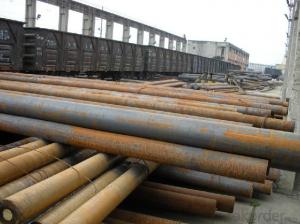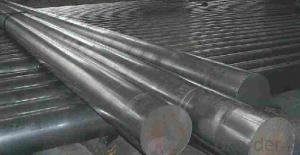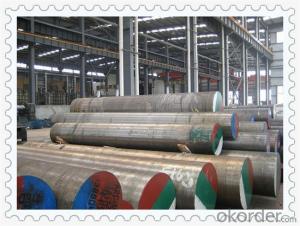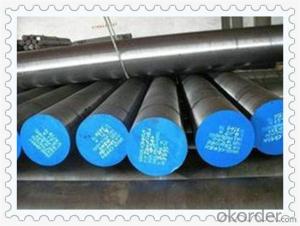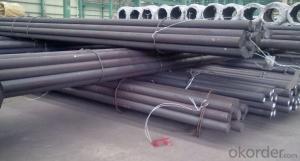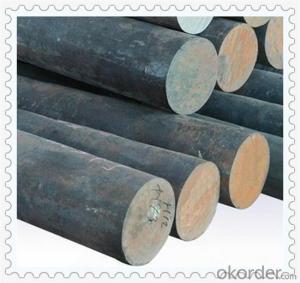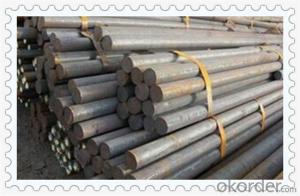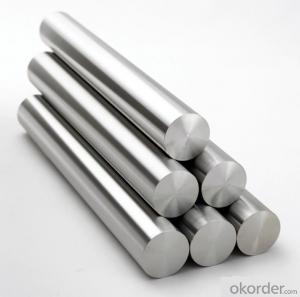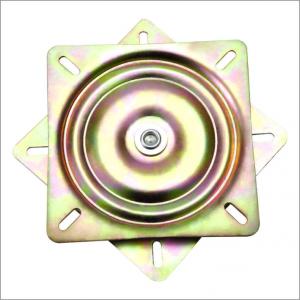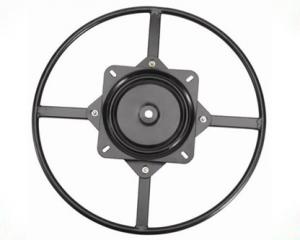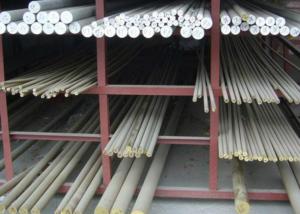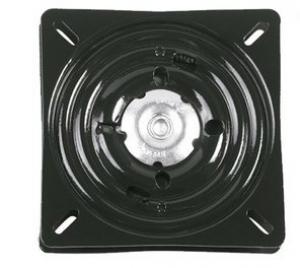SAE 1045 Carbon Steel Round Bars for Building
- Loading Port:
- Tianjin
- Payment Terms:
- TT OR LC
- Min Order Qty:
- 25 m.t.
- Supply Capability:
- 50000 m.t./month
OKorder Service Pledge
OKorder Financial Service
You Might Also Like
Specification
SAE 1045 Carbon Steel Round Bars for Building
Product Description:
1. Sizes: Diameter: 16mm-300mm; Length: 6m, 9m, 12m
2. Grade: 45#, SAE1045, S45C,C45
3. Invoicing on theoretical weight or actual weight as customer’s request
4. Shape: Round bar, solid bar of steel with circular section
5. Technique: Hot rolled, forged, cold rolled
Chemical Composition:
C | Si | Mn | P | S | Ni | Cr | Cu |
0.42-0.50 | 0.17-0.37 | 0.50-0.80 | ≤0.035 | ≤0.035 | ≤0.30 | ≤0.25 | ≤0.25 |
Packing and Delivery:
Packing in bundle with steel strips and shipped by break bulk vessel or container (depend on target market and different ports)
Delivery Detail: Approx.45 days
Usage and Applications:
1.SAE 1045 Carbon Steel Round Bars for Building is used in a large number of architectural and engineering structures. Or it can be used in construction of plants for the production of steel house frames, high-voltage transmission towers, bridges, vehicles, boilers, containers, ships, etc.
2. And we can use this kind of product on the performance of the mechanical parts if the demand is not very high.
3. Some especial material steel round bar can be used for main shaft of steamer, hummer shank, with big section and supper force.
Specification:
OD | Length | Material | Standard | Technique |
16-260mm | 6-12m or aques per request | 20# | GB ASTM DIN | Hot rolled |
16-350mm | 45# | |||
200-500mm | 45# | Forged | ||
20-250mm | 20Cr,40Cr,20-42CrMo | Hot rolled | ||
50-300mm | GCr15 |
Product show of C45 Steel
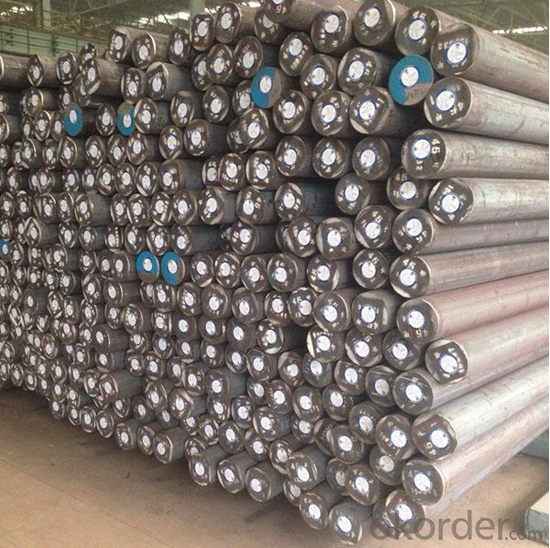
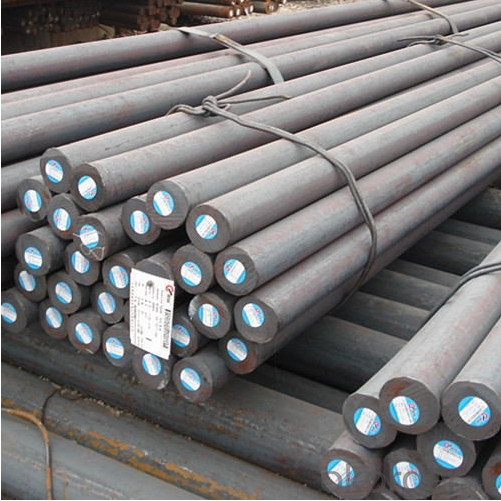
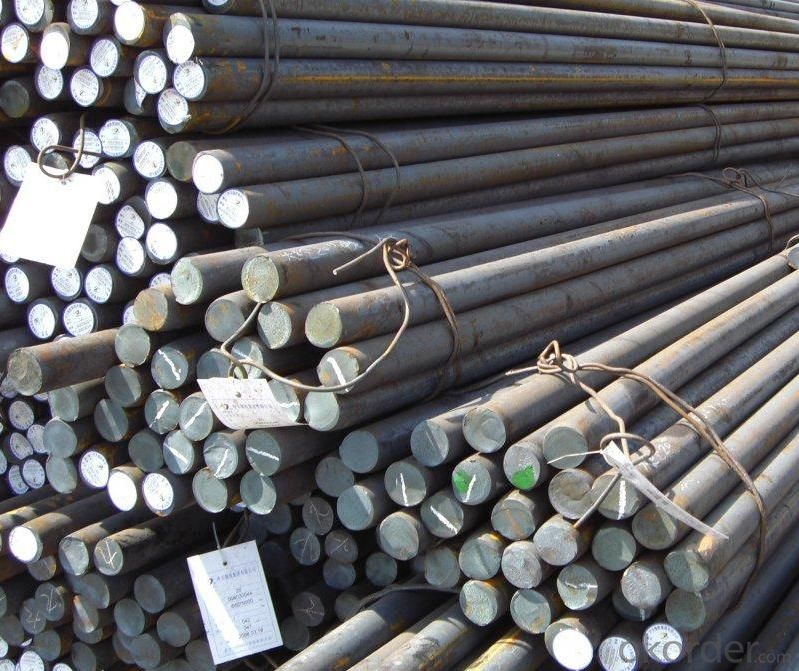
- Q: How does special steel contribute to reducing product recalls?
- Special steel contributes to reducing product recalls by offering enhanced strength, durability, and corrosion resistance, thereby ensuring the integrity and reliability of various products. This reduces the likelihood of manufacturing defects, material failures, and premature breakdowns, which are common causes of product recalls. By using special steel in critical components, manufacturers can enhance product performance, safety, and longevity, leading to fewer recalls and improved customer satisfaction.
- Q: How does special steel perform in cryogenic creep resistance?
- Special steel is known for its exceptional performance in cryogenic creep resistance. Cryogenic creep refers to the deformation that occurs in materials under constant stress at extremely low temperatures. Special steel, due to its unique composition and manufacturing processes, exhibits superior resistance to this type of deformation compared to other materials. The low temperature environment encountered in cryogenic applications can cause conventional materials to lose their strength and become more susceptible to creep deformation. However, special steel is specifically designed to withstand these challenging conditions. Its composition typically includes a higher proportion of alloying elements such as nickel, chromium, and molybdenum, which enhance its mechanical properties and improve its resistance to creep at cryogenic temperatures. Furthermore, special steel undergoes rigorous heat treatment and processing techniques to optimize its microstructure and strengthen its grain boundaries. This results in a material with improved strength, toughness, and resistance to creep deformation, even at extremely low temperatures. The exceptional performance of special steel in cryogenic creep resistance makes it highly suitable for applications that involve storage, transportation, or processing of materials at cryogenic temperatures. Industries such as aerospace, energy, and scientific research heavily rely on special steel for the construction of cryogenic storage tanks, superconducting magnets, and cryogenic valves, among others. In conclusion, special steel exhibits remarkable performance in cryogenic creep resistance due to its unique composition, heat treatment, and processing techniques. Its ability to maintain its mechanical properties and resist deformation at extremely low temperatures makes it an ideal choice for various cryogenic applications.
- Q: How does the composition of special steel affect its mechanical properties?
- The composition of special steel plays a significant role in determining its mechanical properties. Special steel refers to a type of steel that has been modified or alloyed with other elements to enhance its strength, toughness, hardness, and other desirable properties. The addition of various alloying elements, such as manganese, chromium, nickel, molybdenum, vanadium, and tungsten, can significantly impact the mechanical properties of special steel. For example, the addition of chromium can improve corrosion resistance and hardness, making the steel more suitable for applications in harsh environments. Manganese is often added to enhance the hardenability and tensile strength of the steel. Nickel can increase toughness and strength while maintaining good ductility. The amount and combination of these alloying elements can be adjusted to achieve specific mechanical properties. For instance, increasing the carbon content can enhance the strength and hardness of the steel, but it may decrease its ductility. On the other hand, decreasing the carbon content and adding elements like nickel and molybdenum can improve the steel's toughness and impact resistance. Additionally, the heat treatment process is crucial in influencing the mechanical properties of special steel. Through processes such as quenching and tempering, the steel's microstructure can be manipulated to achieve desired properties. Quenching, for example, involves rapidly cooling the steel to obtain high hardness and strength, while tempering helps reduce brittleness and improve toughness. In summary, the composition of special steel, including the type and amount of alloying elements, as well as the heat treatment process, plays a crucial role in determining its mechanical properties. By carefully selecting and controlling these factors, manufacturers can tailor special steel to meet specific performance requirements for various applications.
- Q: What are the standards and certifications for special steel?
- Some of the standards and certifications for special steel include ISO 9001 for quality management systems, ISO 14001 for environmental management systems, and ISO 45001 for occupational health and safety management systems. Additionally, there are various industry-specific standards such as ASTM International, EN standards, and JIS standards that provide specifications and testing requirements for different types of special steel. These standards and certifications ensure that the special steel meets specific quality, safety, and environmental standards, and helps to establish trust and credibility in the industry.
- Q: What are the heat treatment processes used for special steel?
- The heat treatment processes commonly used for special steel include annealing, tempering, quenching, and case hardening.
- Q: What are the limitations of using special steel in electrical applications?
- There are several limitations to using special steel in electrical applications. Firstly, special steel can be more expensive compared to other materials commonly used in electrical applications, such as copper or aluminum. This can make it less cost-effective, especially for large-scale projects. Another limitation is that special steel has a relatively high electrical resistivity compared to copper or aluminum. This means that it is less efficient in conducting electricity, leading to higher energy losses and lower overall efficiency in electrical systems. This can be particularly important in applications where energy efficiency is a priority, such as in power generation or transmission. Additionally, special steel is generally less malleable and ductile compared to other materials like copper. This makes it less suitable for applications that require shaping or forming, as it can be more difficult to work with and may require more complex manufacturing processes. Furthermore, special steel is more prone to corrosion compared to materials like copper or aluminum. This can be a significant limitation in electrical applications, particularly in environments with high humidity or exposure to moisture. Corrosion can lead to degradation of the steel's electrical properties, reduce its lifespan, and increase maintenance and replacement costs. Lastly, special steel may not be as readily available or easily sourced as other materials commonly used in electrical applications. This can pose challenges in terms of availability, lead times, and potential supply chain disruptions, which may impact project timelines and overall productivity.
- Q: What are the properties of wear-resistant tool steel?
- Wear-resistant tool steel is characterized by its high hardness, strength, and resistance to abrasion and wear. It has a high carbon content, typically ranging from 0.7% to 1.5%, which contributes to its hardness and wear resistance. This type of steel is also known for its ability to retain its hardness even at high temperatures, making it suitable for applications that involve friction and heat. Additionally, wear-resistant tool steel usually exhibits good toughness and machinability, allowing it to withstand heavy usage and be easily shaped into various tool forms.
- Q: Can special steel be used in the food packaging industry?
- Yes, special steel can be used in the food packaging industry. Special steel, such as stainless steel, is commonly used in food processing and packaging due to its resistance to corrosion, durability, and easy cleaning properties. It ensures the hygiene and safety of food products, making it suitable for various applications in the food packaging industry.
- Q: What are the different tempering techniques used for special steel?
- Some of the different tempering techniques used for special steel include air tempering, oil tempering, water tempering, and salt bath tempering.
- Q: What are the challenges faced in the manufacturing process of special steel?
- To ensure the production of high-quality special steel, numerous challenges must be addressed in the manufacturing process. Some of the key challenges faced are as follows: 1. Raw material selection: It is crucial to choose the appropriate raw materials with specific alloying elements in precise proportions to achieve the desired properties of special steels. Consistently ensuring the availability and quality of these raw materials can be challenging. 2. Alloy design and composition: Designing the alloy composition to meet specific requirements can be a complex task. Achieving the desired balance of strength, hardness, toughness, corrosion resistance, and other properties necessitates thorough research, testing, and expertise. Developing new alloys with improved properties can be particularly difficult. 3. Melting and refining: Special steels are typically produced using electric arc furnaces or induction melting. Ensuring precise temperature control, proper cooling rates, and refining processes to eliminate impurities like sulfur, phosphorus, and non-metallic inclusions are crucial. Advanced technology and precise control are necessary to maintain consistent quality. 4. Heat treatment: Heat treatment is a critical step in the special steel manufacturing process. Achieving the desired microstructure and properties through processes like quenching, tempering, annealing, or precipitation hardening can be challenging. Proper temperature control, heating and cooling rates, and time durations are essential to obtain the desired properties. 5. Quality control and testing: Consistently ensuring quality throughout the manufacturing process is of utmost importance. Regular testing and inspection to detect and eliminate defects, inconsistencies, and non-conformities are necessary. This includes dimensional accuracy, mechanical properties testing, non-destructive testing, and chemical analysis. 6. Production efficiency: Special steel manufacturing often involves complex procedures and longer processing times compared to regular steel production. Optimizing the production process to maximize efficiency, minimize waste, and reduce energy consumption is an ongoing challenge. Implementing lean manufacturing principles and utilizing advanced technologies can help address these challenges. 7. Environmental considerations: The production of special steel can have a significant environmental impact. Addressing issues such as energy consumption, waste management, emissions control, and water usage is crucial for sustainable production. Complying with environmental regulations and adopting eco-friendly practices can be challenging yet necessary. Overcoming these challenges requires a combination of technical expertise, research and development, investment in advanced equipment and technologies, and an ongoing commitment to quality control and process improvement.
Send your message to us
SAE 1045 Carbon Steel Round Bars for Building
- Loading Port:
- Tianjin
- Payment Terms:
- TT OR LC
- Min Order Qty:
- 25 m.t.
- Supply Capability:
- 50000 m.t./month
OKorder Service Pledge
OKorder Financial Service
Similar products
Hot products
Hot Searches
Related keywords
